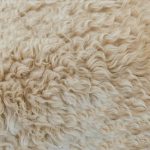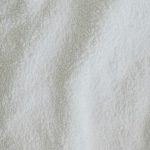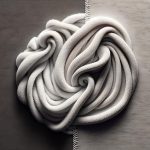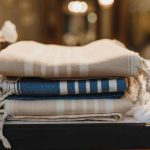You're likely familiar with the soft, absorbent texture of terry cloth, but have you ever wondered what sets French terry apart from its regular counterpart? At first glance, the two may seem identical, but a closer look reveals some key differences. French terry features a unique weave that creates a smooth surface on one side and a plush pile on the other, making it more durable and breathable than regular terry cloth. But what does this mean for the fabric's performance and uses? As you explore the world of French terry, you'll discover some surprising advantages that make it a top choice for certain applications.
Table of Contents
French Terry Fabric Construction
When you look at French terry fabric, you'll notice it's constructed with a specific type of weave that features loops on one side and a soft, smooth surface on the other. This distinctive weave gives French terry its characteristic look and feel. As you run your hand over the fabric, you'll feel the plush loops on the surface, while the back remains flat and smooth.
One side of French terry has rows of looped threads, typically cotton, which are deliberately designed to snag against other surfaces and release those fuzzy white tendrils (pile break-offs or loiter). This unique construction allows for a soft and comfortable texture against the skin.
The French terry fabric is designed to be durable and long-lasting, making it a popular choice for clothing and textiles. The loops on the surface of the fabric can be prone to snagging, but this is a deliberate design feature that allows for a soft and comfortable texture.
The fabric is also known for its ability to hold its shape and resist pilling, making it a great choice for garments that require a smooth and flat surface. The French terry fabric is also breathable and moisture-wicking, making it a popular choice for activewear and sportswear.
Terry Cloth Weave Patterns
Examine the weave patterns of regular terry cloth, and you'll notice a distinct difference from French terry: the loops are evenly distributed on both sides of the fabric, creating a more uniform texture.
This is because regular terry cloth is woven using a specific technique that produces loops on both sides of the fabric.
- Loop distribution: Regular terry cloth has loops on both sides of the fabric, creating a more uniform texture.
- Fabric thickness: Regular terry cloth tends to be thicker and more dense than French terry, which can make it more durable and less prone to snagging.
- Visual interest: The even distribution of loops on both sides of regular terry cloth can create a more textured and visually interesting fabric.
On the other hand, French terry has loops on one side and a smooth surface on the other.
Softness and Absorbency Comparison
Considering the differences in weave patterns between regular terry cloth and French terry, it's natural to wonder how these variations affect the softness and absorbency of each fabric.
You'll notice that French terry has a softer and more plush pile on one side, which makes it feel more gentle against your skin. This is because the loops on French terry are smaller and more densely packed, creating a more even and smooth texture.
On the other hand, regular terry cloth has a more rugged and absorbent texture, with larger loops that allow for better airflow and moisture-wicking properties.
When it comes to absorbency, regular terry cloth is generally better at soaking up liquids due to its looser weave and larger loops.
However, French terry is still absorbent, but it tends to hold onto moisture for longer, making it more suitable for applications where you want to retain warmth or moisture, such as in towels or sweatpants.
Durability and Longevity Differences
As you weigh the pros and cons of French terry and regular terry cloth, you'll want to dig into how each fabric holds up over time, and what sets them apart in terms of durability and longevity.
When it comes to durability, French terry has a slight edge over regular terry cloth. This is because French terry is made with a more complex weaving process that creates a denser fabric.
- Less prone to pilling: French terry's denser weave makes it less likely to pill or fray over time, giving it a longer lifespan.
- Better resistance to wear and tear: French terry's unique weave also makes it more resistant to wear and tear, making it a great choice for clothing and textiles that will be subject to heavy use.
- Longer color retention: French terry's dense weave also helps to lock in colors, reducing fading and discoloration over time.
Uses for French Terry Fabric
French terry fabric is incredibly versatile, lending itself to a wide range of applications, from casual wear to home textiles.
You can use it to create comfortable clothing items like sweatpants, hoodies, and sweatshirts. The soft, absorbent, and breathable properties of French terry make it perfect for activewear, loungewear, and even sleepwear.
You can also use it to make accessories like hats, scarves, and headbands.
In addition to clothing, you can use French terry fabric for home textiles like towels, blankets, and throw pillows.
The fabric's absorbency and softness make it ideal for bath towels and washcloths. You can also use it to create decorative items like table runners, placemats, and coasters.
French terry fabric is also a popular choice for DIY projects like quilts, stuffed animals, and baby blankets. Its ease of care and durability make it a great choice for items that will be used frequently.
With its many uses and benefits, it's no wonder French terry fabric is a favorite among crafters, sewists, and DIY enthusiasts.
Frequently Asked Questions
Can French Terry Be Used for Outdoor Clothing?
You're wondering if French terry's soft, absorbent nature makes it suitable for outdoor clothing. While it's perfect for casual, indoor wear, you'll likely find it's not durable enough for rugged outdoor activities that require quick-drying fabrics.
Is French Terry Fabric Prone to Pilling?
You're likely wondering if French Terry fabric is prone to pilling, but rest assured that it's designed to resist pilling and wear well, especially if you care for it properly with gentle washing and drying methods.
Can I Use French Terry for Quilting Projects?
You can use French terry for quilting projects, but keep in mind it's a bit stretchy and may require some adjustments to your sewing technique. It's perfect for quilts that need a soft, cozy texture.
Is French Terry Suitable for Sensitive Skin?
You're considering French terry for sensitive skin, and that's a great choice! French terry is generally soft, breathable, and gentle, making it suitable for sensitive skin. You'll likely find it comfortable against your skin.
Can French Terry Be Dyed at Home?
You can dye French terry at home, but it's crucial you follow specific guidelines to avoid damaging the fabric. You'll need to choose the right dye type, test a small area first, and carefully monitor the process.
- How Does Ring Spun Cotton Affect Garment Fit and Shape Retention? - August 13, 2024
- What Are the Challenges in Producing Ring Spun Cotton? - August 13, 2024
- Is Ring Spun Cotton Suitable for Plus-Size Clothing? - August 13, 2024







